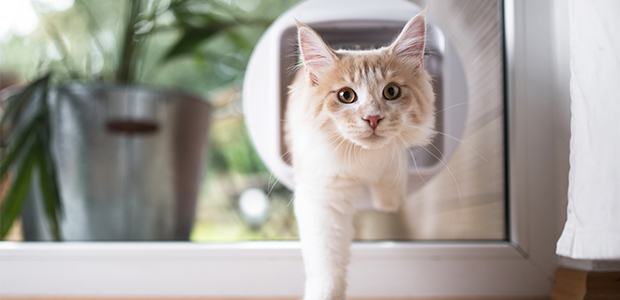First Outdoor Adventure: 7 Essential Steps for Letting Your Cat Outside
First Published: 11/06/2019
Last Updated: 24/01/2024
Their independent and exploratory nature is what makes our feline friends so loveable, but how do you know it’s time for them to venture outside? How do you make sure they’re safe?
Let’s take a look at all you need to know about letting your cat out for the first time.
Are they at the correct age?
If your cat is a young kitten when you first bring them home, we advise waiting until they’re at least 6 months old before you let them out. At this age, a cat is mature enough for the outside world, will be able to keep their bearings without getting lost and will be old enough to interact with other cats. Before letting your kitty out, make sure they’ve had all the relevant vaccinations and that they’re up to date with their flea and worm treatments.
If your cat is a rescue cat and they were fully grown when you got them, you won’t need to wait as long. A waiting period of 2-6 weeks will suffice, this ensures the cat is comfortable enough in their new home but also that they haven’t been cooped up indoors long enough to start feeling bored.
Are they neutered?
It’s also essential to make sure your cat has been neutered before venturing into the outside world. Male un-neutered cats are more likely to stray far from home and female cats will become pregnant very quickly. Cats of both genders are more likely to fight if they haven’t been neutered, resulting in abscesses and increasing the risk of the feline equivalent of HIV.
Are they microchipped?
Perhaps the most important action you can take before letting your cat explore the outside world is to have them microchipped. If a microchipped cat wanders off a little too far, the person who finds them can take them to the vets, scan the chip and set about reuniting them with their owner. If a non-microchipped cat wanders off, the process is a lot more complicated…
Patience is key…
So your cat is fully vaccinated, safe from fleas and microchipped, it’s now time for them to experience the wonders of outside! Think about things from their point of view, there are lots of scary things out there and stepping out for the first time might not be too appealing.
Make sure you’re patient with your cat at all times. If they want to go back inside, even if they’ve only been out for a short while, let them.
… as is supervision
The first few times your kitten goes outside, try your best to keep an eye on them while they’re finding their feet.

The importance of feeding time
Food is a fantastic method of both encouraging and limiting your cat’s outdoor time. When you first let them out, do it 10 minutes before feeding time. Next time 20, so on and so forth until your cat learns that in order to eat, they must come home.
When you bring your outdoor cat in from their adventure, try to get into the habit of ringing a bell (or another, similar sound) as they eat. If you keep this up, you’ll be able to summon your cat inside by ringing the bell – they’ll associate it with food and won’t be able to resist!
Do you have the best cat flap?
These days, most cat flaps come with a microchip sensor, meaning that only your cat can come in and out of your house. We recommend these for this reason. If your cat flap doesn’t have a microchip sensor and your cat seems reluctant to go outside or go near it, it could be because another neighbour cat is troubling them. If you’re unable to install a cat flap with a microchip sensor, contact your vet for further advice.

Need more info?
The most important thing to remember is that cats are highly self-sufficient and independent animals – going out for adventures and finding their way back is just what they do! If you have concerns or queries, have a chat with your vet.
Find your nearest vet using our Find a Vet page, or speak to a vet online using Online Vets.




